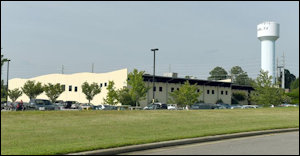 Danville City Council will decide next week whether to forgive $912,000 owed the city by its land purchasing arm, the Industrial Development Authority. The money represents the unpaid portion of a $1.6 million loan issued in 2015 to entice Telvista, a call center operator which closed its facility in 2018 and ceased making lease payments.
Danville City Council will decide next week whether to forgive $912,000 owed the city by its land purchasing arm, the Industrial Development Authority. The money represents the unpaid portion of a $1.6 million loan issued in 2015 to entice Telvista, a call center operator which closed its facility in 2018 and ceased making lease payments.
The city needs to clear the books on the Airside Industrial Park property to make way for a new investment by Norfolk-based PRA Group, which has promised to invest $15 million and bring 500 jobs. “The property can’t close until this is done,” said City Manager Ken Larking, as reported by the Danville Register & Bee.
City Council is likely to forgive the loan. The PRA operation — ironically, a debt collection center — will employ more people and pay better at $38,400 per year on average than the old Telvista operation.
I don’t question the decision to forgive the loan, or even to advance the loan to Telvista back in 2015 (as questionable as that might have been). But I do wonder how many other bad loans lurk on the books of Virginia industrial and economic development authorities, and how many of those loans represent unrecognized liabilities of their affiliated local governments.
Just a couple of weeks ago, we noted the filing of a $17.6 million lawsuit against the Front Royal-Warren County Economic Development Authority alleging all manner of financial irregularities. That controversy involves a very different set of issues, but it reinforces the idea that many local governments aren’t paying sufficient attention to their quasi-independent economic development arms.
The big question is how endemic these bad loans and irregularities are. Are they limited to Warren County and Danville? Or might these be just the problems that have bubbled to the surface? I know of no one — absolutely no one — who has made a systematic audit of local development authorities.
Many of the projects that local governments back are undoubtedly worthwhile. But the public — and I’ll bet most city councilmen and board supervisors — have no idea of how much risk they are exposed to. If local governments are getting hit with $900,000 liabilities now, a decade into an economic expansion, how many other loans will go bad? What will the exposure be when the next recession hits? And how much have local governments they set aside in financial reserves to weather the bad-debt crises?
Maybe someone should make it their business to find out.



